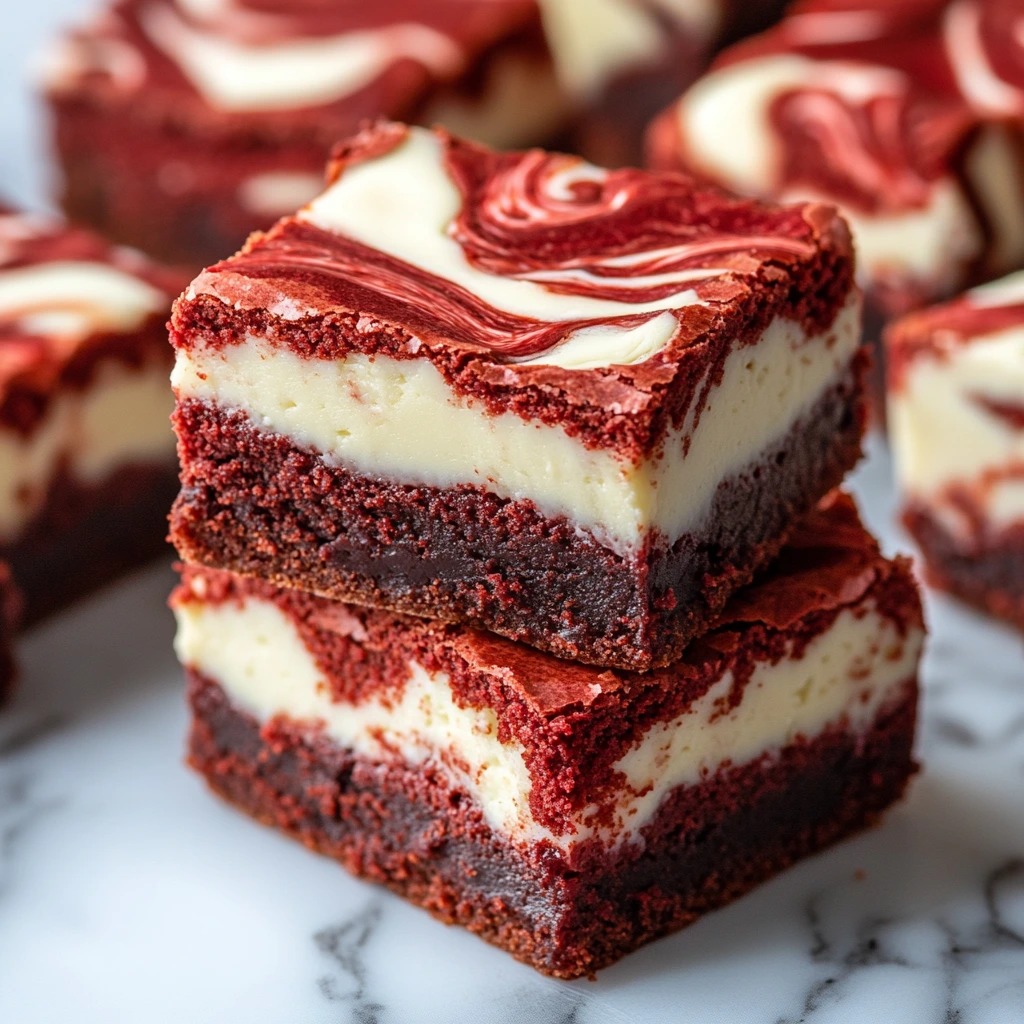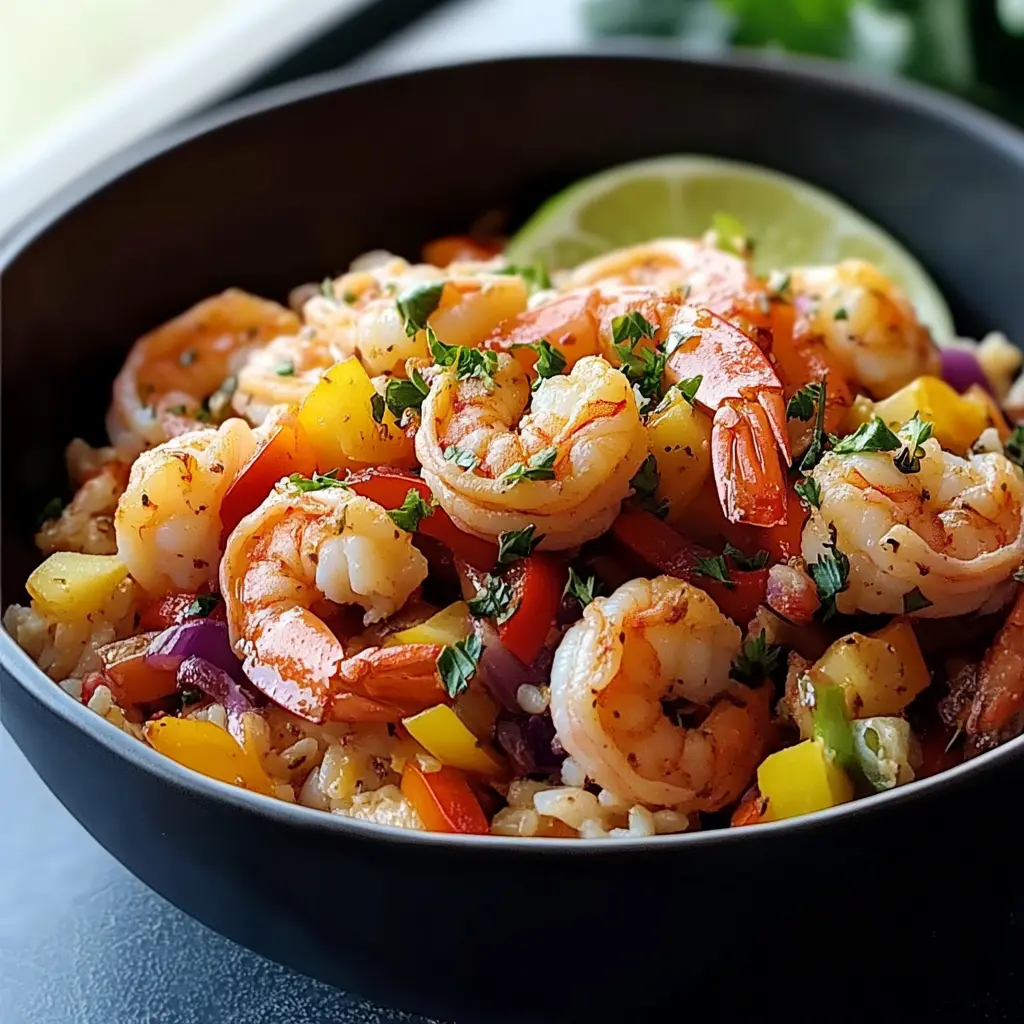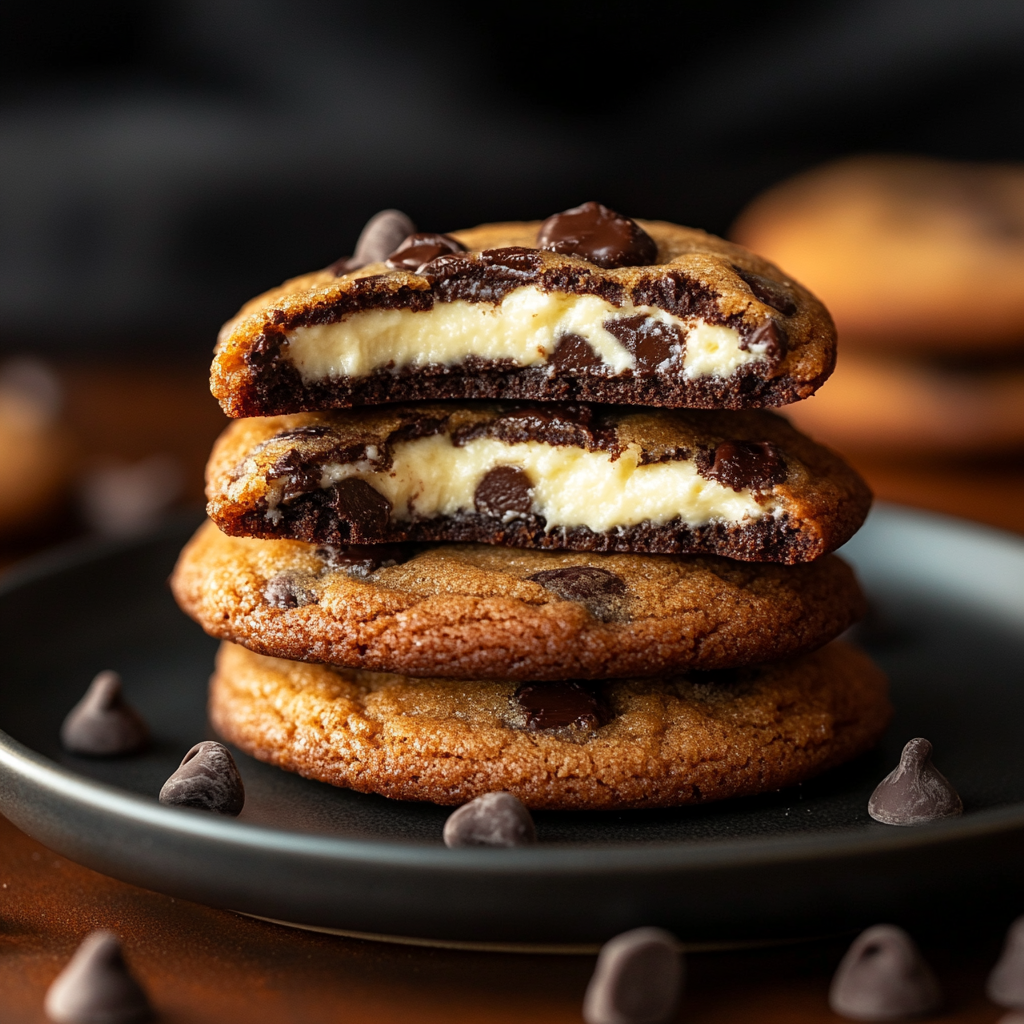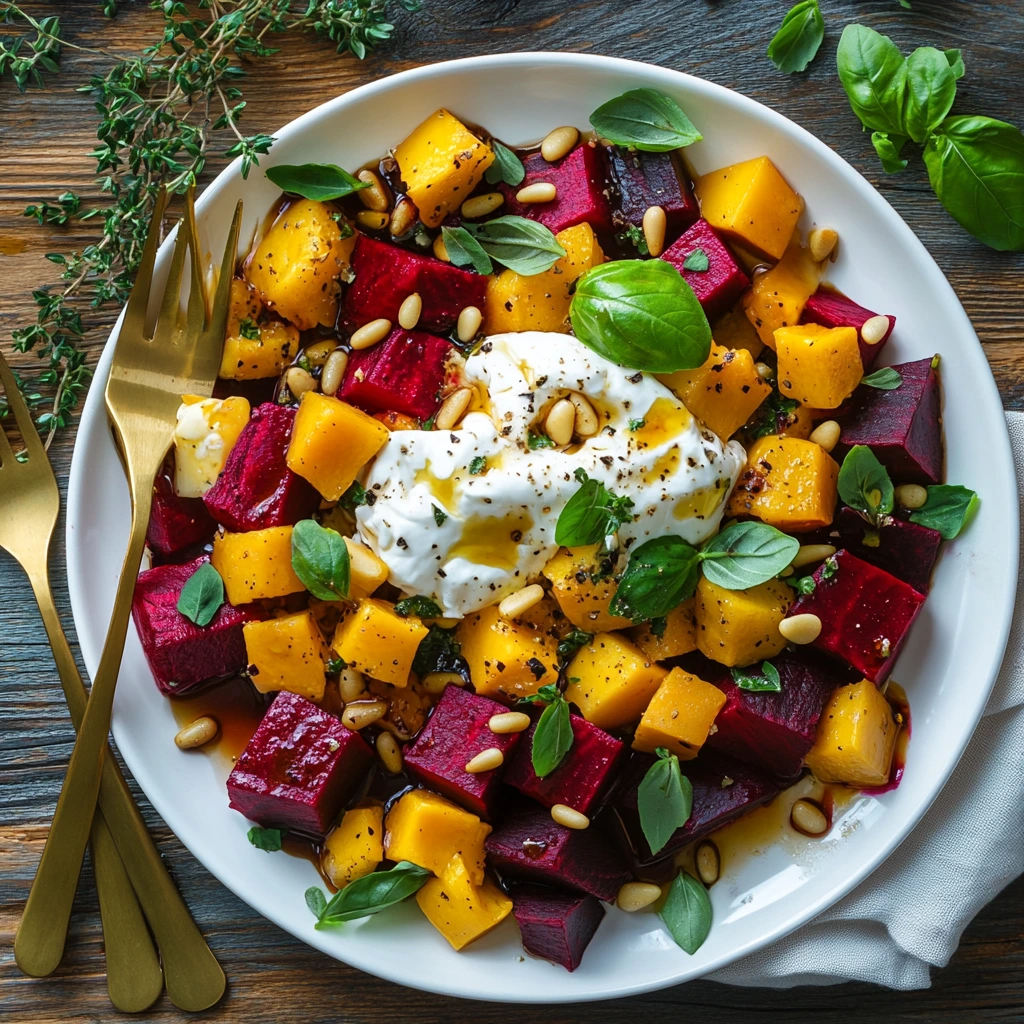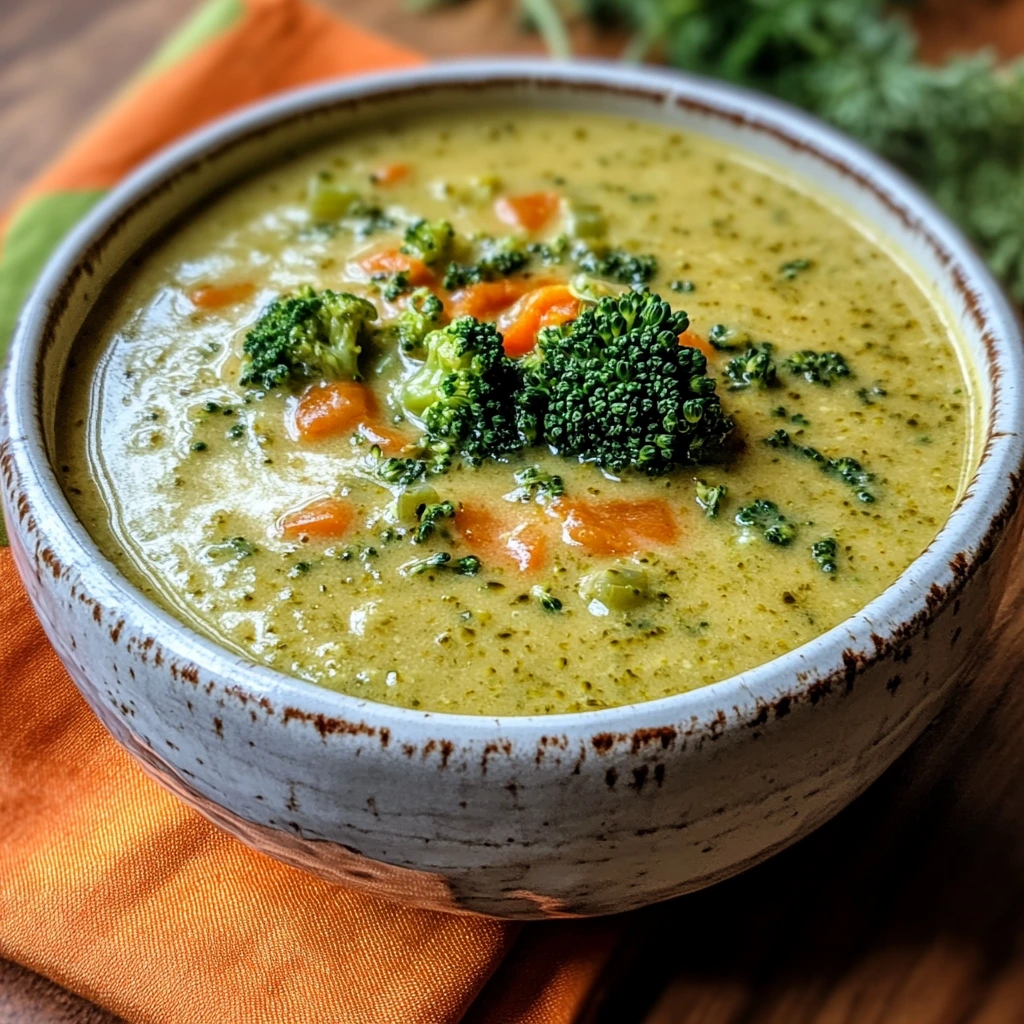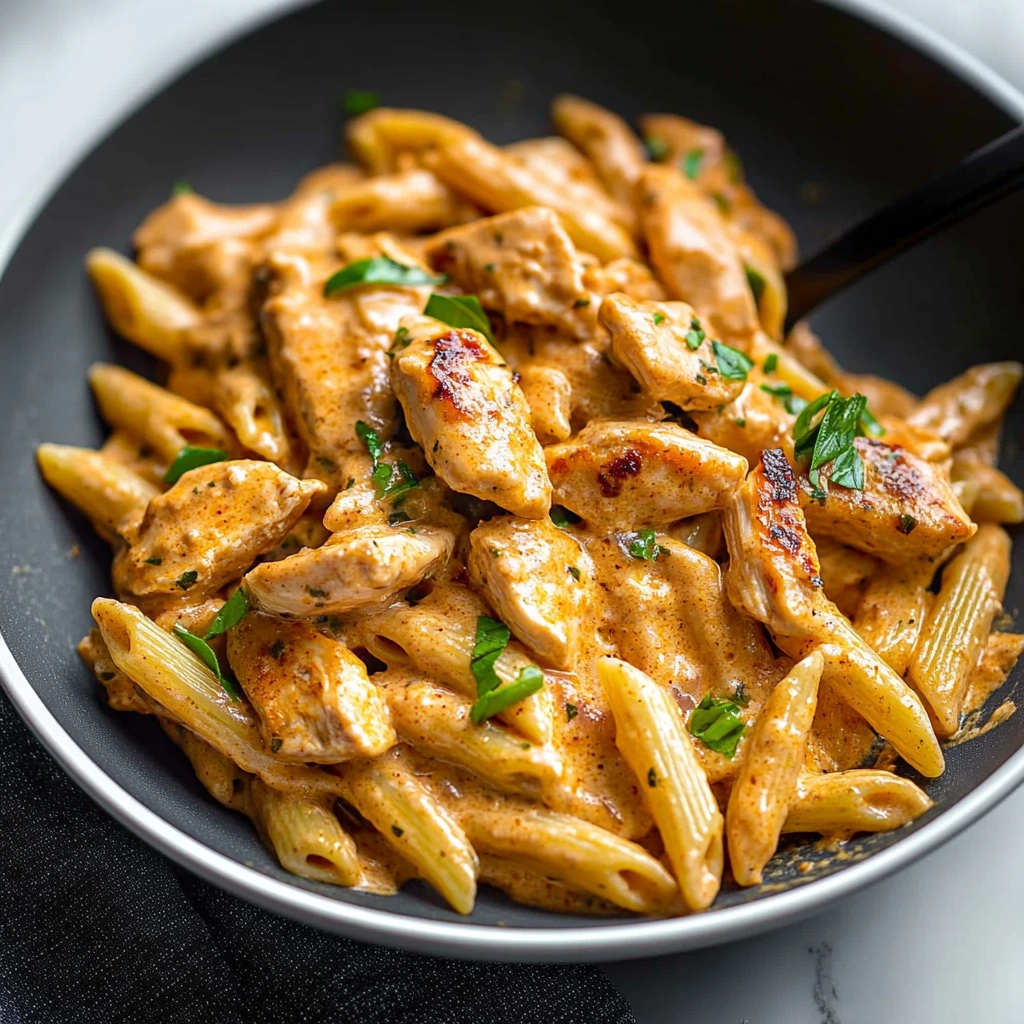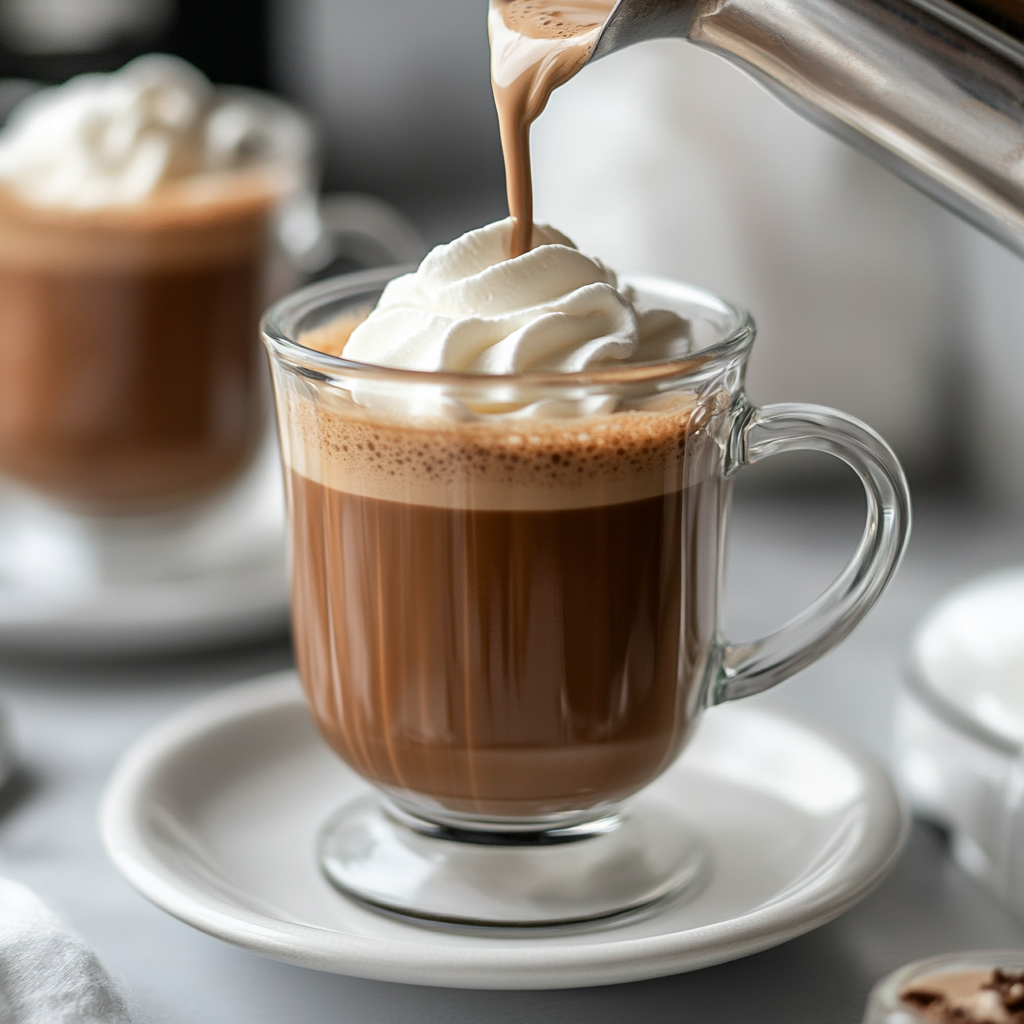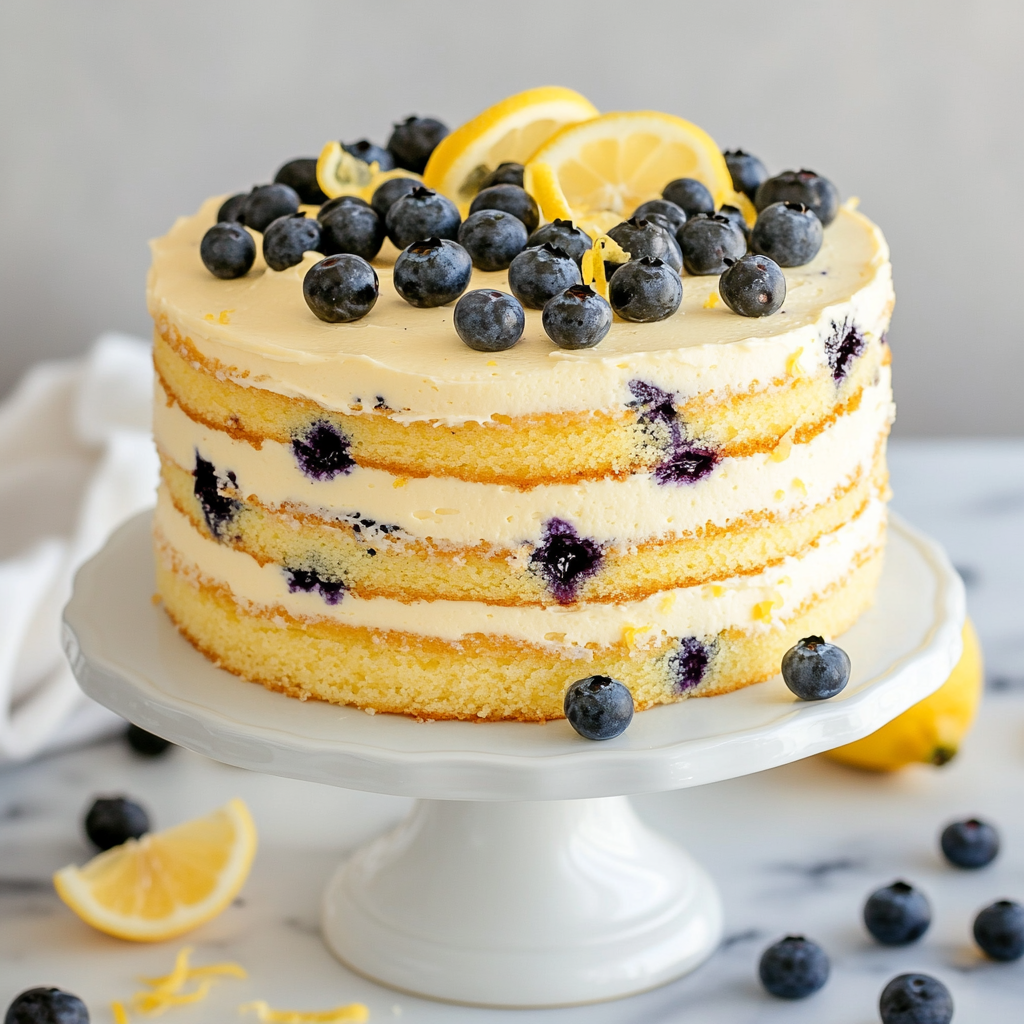There’s something undeniably satisfying about a bowl of classic Italian pasta salad—bursting with color, packed with flavor, and incredibly versatile. Whether you’re planning a summer barbecue, prepping meals for the week, or looking for a dish to bring to a potluck, this beloved salad has earned its place as a staple in kitchens across the world.
At its core, Italian pasta salad is a cold, refreshing medley of pasta, crisp vegetables, savory meats, creamy cheese, and zesty Italian dressing. It’s the perfect marriage of flavor and texture, where every bite offers a little bit of everything. The key lies in the balance: the chew of perfectly cooked pasta, the crunch of bell peppers, the briny kick from black olives, and the tangy zing of the dressing pulling it all together.
While pasta salad variations abound, the classic Italian version is a celebration of Mediterranean flavors and simple ingredients. It’s no surprise that it continues to be a go-to side dish (or even main course!) for those looking for something easy to make, yet endlessly customizable. You can prepare it ahead of time, store it in the fridge, and it just gets better as it soaks up more flavor.
The real star? The Italian dressing—either homemade or store-bought—which infuses the salad with garlicky, herby, vinegary goodness that makes it hard to resist a second helping.
In this guide, we’ll walk through every detail you need to know: from choosing the right pasta and ingredients to crafting the perfect dressing and mastering the art of pasta salad assembly. Get ready to upgrade your salad game with this classic Italian favorite that’s equal parts fresh, filling, and foolproof.
Key Ingredients Overview
A great Classic Italian Pasta Salad starts with the right mix of fresh, flavorful, and complementary ingredients. Each component plays a unique role in creating a vibrant, satisfying dish that’s full of texture and taste. Here’s a breakdown of the essential ingredients you’ll need:
Pasta
The base of the salad, pasta holds everything together. Short pasta shapes like rotini, penne, bowtie (farfalle), or fusilli are ideal—they have ridges or twists that help the dressing cling to every bite. Make sure to cook it al dente for the best texture.
Vegetables
Bright, crunchy vegetables add freshness and color. Common choices include:
-
Cherry or grape tomatoes – juicy and slightly sweet
-
Bell peppers – red, yellow, or green for a colorful mix
-
Red onion – adds a sharp bite
-
Black olives – for a briny contrast
Feel free to toss in extras like cucumber, broccoli, or shredded carrots for even more variety.
Cheese & Protein
Mozzarella balls (bocconcini) or diced provolone are creamy additions that balance the tangy dressing. For a heartier version, include salami, pepperoni, or grilled chicken. Vegetarians can opt for chickpeas or white beans as a protein boost.
Herbs & Seasonings
Fresh herbs like basil, parsley, and oregano elevate the flavors and give the salad an authentic Italian touch. A pinch of salt, black pepper, and even some red pepper flakes can deepen the taste.
Italian Dressing
Whether store-bought or homemade, the zesty Italian dressing ties everything together. Made from olive oil, vinegar, garlic, and herbs, it soaks into the pasta and veggies, delivering that signature tang in every bite.
Choosing the Best Pasta for the Salad
The foundation of any pasta salad is, of course, the pasta. Choosing the right shape and cooking it properly can make all the difference in both texture and flavor.
For Italian pasta salad, short pasta shapes work best. Options like rotini, fusilli, penne, and bowtie (farfalle) are popular because their grooves, ridges, or twists help capture the dressing and hold onto other ingredients. Avoid long noodles like spaghetti or linguine, which don’t mix well and are difficult to serve cold.
Equally important is cooking the pasta to the right doneness. Aim for al dente—firm to the bite. Overcooked pasta becomes mushy once mixed with dressing and stored in the fridge. After boiling, immediately drain and rinse the pasta under cold water to stop the cooking process and cool it down quickly. This also helps prevent clumping.
Lightly toss the pasta in a small amount of olive oil before combining it with the other ingredients. This step adds flavor and keeps it from sticking while you prep the remaining components.
Whole wheat or gluten-free pasta can be used as substitutes for dietary needs. Just be sure to follow cooking instructions carefully, as alternative pastas can have different textures and require less or more time.
Choosing the right pasta and preparing it well ensures a sturdy, flavorful base that won’t fall apart or turn soggy—essential for a salad that stays delicious for days.
How to Make Homemade Italian Dressing
While store-bought Italian dressings are convenient, nothing beats the bold, fresh flavor of a homemade version. Making your own Italian dressing takes just a few minutes and allows you to control the taste and quality of ingredients.
Core Ingredients:
-
1/2 cup extra virgin olive oil
-
1/4 cup red wine vinegar (or white wine vinegar)
-
1–2 cloves garlic, finely minced or grated
-
1 teaspoon Dijon mustard (helps emulsify the dressing)
-
1 teaspoon dried oregano
-
1/2 teaspoon dried basil
-
1/4 teaspoon onion powder
-
1/2 teaspoon sugar or honey (optional, for balance)
-
Salt and freshly ground black pepper to taste
Optional Add-Ins:
-
1 tablespoon grated Parmesan cheese
-
A squeeze of fresh lemon juice for brightness
-
Crushed red pepper flakes for heat
Instructions:
-
In a small bowl or mason jar, combine all ingredients except the olive oil.
-
Slowly whisk in the olive oil while stirring, or if using a jar, shake vigorously until the mixture is well blended.
-
Taste and adjust seasonings as needed. Add more vinegar for tang, or a touch of honey if it’s too sharp.
-
Store in the refrigerator for up to one week. Let it sit at room temperature for 10–15 minutes before using, as the olive oil may solidify when chilled.
Step-by-Step Instructions
Making a classic Italian pasta salad is simple when broken down into clear steps. Here’s how to do it from start to finish.
1. Cook the Pasta
Boil your chosen pasta in salted water according to the package instructions. Cook until al dente—firm but not hard. Drain the pasta and rinse it under cold water to cool it quickly and prevent further cooking. Set aside.
2. Prepare the Dressing
While the pasta cools, make the homemade Italian dressing (see instructions above). Alternatively, choose a quality store-bought dressing if you’re short on time. Keep the dressing chilled until you’re ready to mix the salad.
3. Chop the Ingredients
Dice or slice your vegetables and protein options into bite-sized pieces. Halve the cherry tomatoes, slice the bell peppers, cube the cheese, and cut the salami or pepperoni. Finely chop any fresh herbs.
4. Combine the Salad
In a large mixing bowl, combine the cooled pasta with vegetables, meats, cheese, and olives. Pour about two-thirds of the dressing over the salad and toss well to coat everything evenly.
5. Let it Marinate
For the best flavor, let the pasta salad sit in the refrigerator for at least 30 minutes—ideally one to two hours. This allows the dressing to soak into the pasta and other ingredients.
6. Final Touches
Before serving, give the salad a quick stir and taste it. Add more dressing if needed, along with extra herbs or a pinch of salt and pepper to refresh the flavor. Serve chilled.
Tips for the Best Italian Pasta Salad
Creating a standout Italian pasta salad is all about technique, balance, and smart preparation. These expert tips will help you elevate your salad from average to unforgettable.
1. Salt the Pasta Water
Flavor begins at the base. Always salt your pasta water—it’s your first chance to season the pasta itself. A tablespoon of salt per 4–5 quarts of water is a good rule of thumb.
2. Don’t Overcook the Pasta
Cook it al dente so it holds up well when mixed with dressing and other ingredients. Overcooked pasta turns mushy, especially after sitting in the fridge.
3. Dress the Pasta While It’s Slightly Warm
Warm pasta absorbs the dressing better. Let the pasta cool slightly, then toss it with half the dressing to help lock in flavor before adding other ingredients.
4. Use a Mix of Colors and Textures
Balance is key. Combine crisp veggies, tender pasta, chewy meats, and creamy cheese. A vibrant mix of colors also makes the salad more appetizing.
5. Let It Marinate
Pasta salad tastes better after it sits. Give it at least 30 minutes in the fridge to allow the flavors to meld. Overnight is even better.
6. Refresh Before Serving
Pasta tends to absorb dressing over time. Add a splash of extra dressing or olive oil and toss again just before serving to brighten up the salad.
7. Keep It Cold
If serving outdoors, keep the salad in a chilled container or on ice to maintain freshness and food safety.
Popular Variations to Try
One of the best things about Italian pasta salad is its versatility. You can easily adjust the ingredients based on dietary preferences, seasonal produce, or simply what you have on hand. Here are some popular and creative variations to inspire your next batch.
1. Vegetarian Italian Pasta Salad
Omit the meat and load up on extra vegetables like zucchini, artichoke hearts, roasted red peppers, and chickpeas. Add marinated mozzarella balls or feta cheese for richness.
2. Gluten-Free Pasta Salad
Swap traditional pasta for a certified gluten-free alternative made from rice, quinoa, or lentils. These pastas often have a slightly different texture, so cook them carefully and rinse thoroughly after boiling.
3. Mediterranean-Inspired Pasta Salad
Give your salad a Mediterranean flair by adding ingredients like kalamata olives, crumbled feta, sun-dried tomatoes, and a splash of lemon juice. Swap Italian dressing for a lemon-oregano vinaigrette.
4. Antipasto Pasta Salad
Turn your salad into an antipasto platter by incorporating marinated artichokes, pepperoncini, provolone cubes, and rolled slices of salami and prosciutto.
5. Pesto Pasta Salad
For a twist, replace the Italian dressing with basil pesto (store-bought or homemade). Add cherry tomatoes, fresh mozzarella, and pine nuts for a bright, nutty variation.
6. Dairy-Free Version
Leave out the cheese and use a dairy-free Italian dressing. Add creamy avocado or roasted chickpeas to make up for the richness.
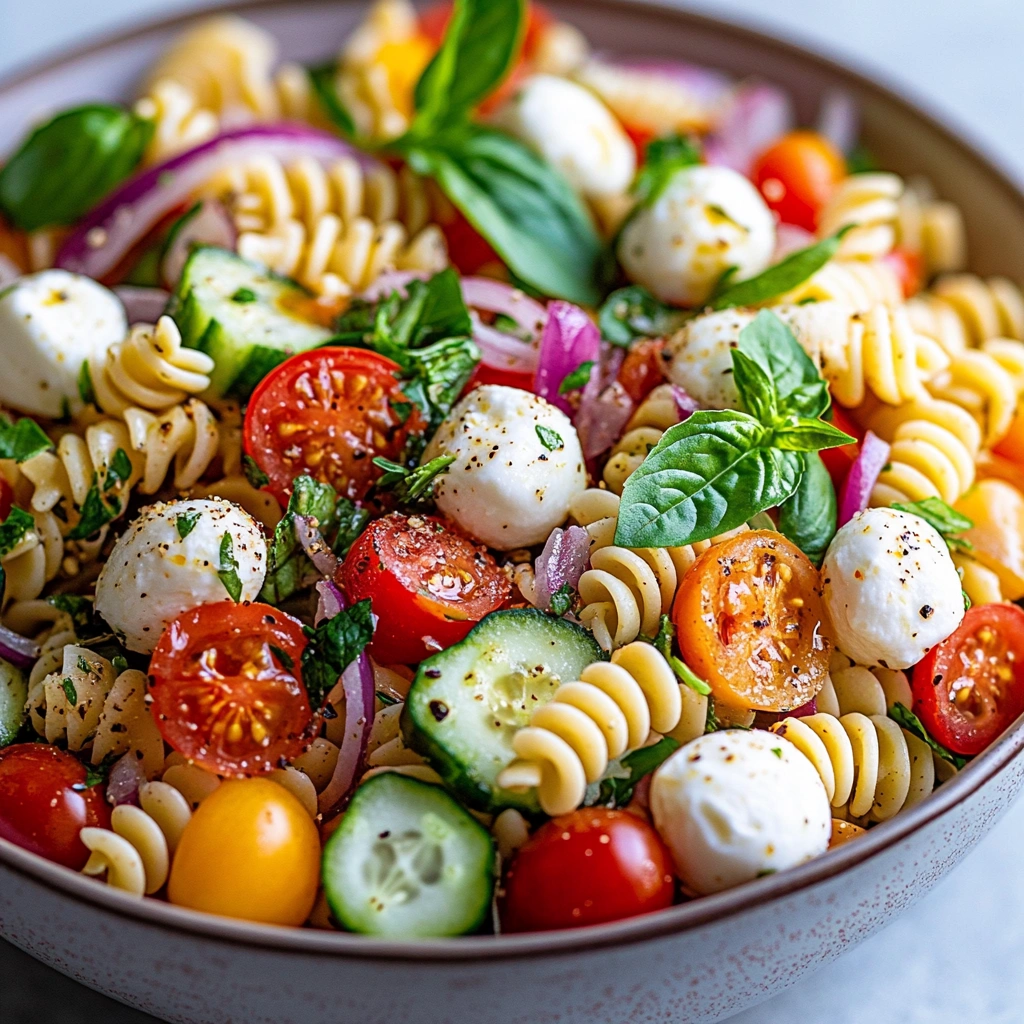
Serving Suggestions & Pairings
Italian pasta salad is a crowd-pleaser that works in many meal settings. Whether you’re planning a casual lunch, an outdoor picnic, or a big summer gathering, it’s easy to pair and serve.
As a Side Dish
Pasta salad is ideal alongside grilled meats like chicken, steak, or sausages. It also complements burgers, sandwiches, and barbecue fare. The acidity of the dressing cuts through heavier, smoky flavors beautifully.
As a Main Course
For a complete meal, bulk up the salad with extra protein—think grilled chicken, tuna, hard-boiled eggs, or chickpeas. Serve with crusty Italian bread or garlic knots to round out the plate.
Potluck or Party Favorite
Since it holds up well at room temperature, this salad is a favorite for potlucks and buffets. Serve it in a large, shallow bowl or tray for easy access and visual appeal. Garnish with extra herbs or grated cheese just before serving.
Warm vs. Cold
While traditionally served cold, you can also enjoy it at room temperature or even slightly warm, especially if freshly made. Just don’t leave it out for more than 2 hours to ensure food safety.
Storage and Leftovers
Italian pasta salad stores exceptionally well, making it a great make-ahead dish. Here’s how to keep it fresh and flavorful for days.
Refrigeration
Store the pasta salad in an airtight container in the refrigerator. It will stay fresh for 3 to 5 days, though the texture may change slightly as the pasta continues to absorb the dressing.
Refreshing Leftovers
Before serving leftovers, give the salad a quick stir and add a little more dressing or a drizzle of olive oil to bring back the moisture and flavor.
Freezing
Freezing is not recommended. Pasta tends to become mushy when thawed, and the texture of fresh vegetables can break down. If you must freeze it, do so without the dressing and add it after thawing.
Best Containers
Use glass or high-quality plastic containers with tight-fitting lids. Dividing the salad into smaller portions can also make it easier to grab for quick lunches.
Health Benefits & Nutrition
Italian pasta salad can be both delicious and nutritious when made with fresh, whole ingredients. Here’s a look at the potential health benefits and how to make it even better for you.
Balanced Macronutrients
A typical pasta salad includes a combination of carbohydrates (from pasta), healthy fats (from olive oil), and proteins (from cheese or meats). When built correctly, it can serve as a well-rounded meal.
Nutrient-Rich Ingredients
Vegetables like bell peppers, tomatoes, and onions provide vitamins A, C, and antioxidants, while herbs like parsley and basil offer anti-inflammatory properties. Olive oil adds heart-healthy fats.
Easy to Modify
You can lighten up the salad by:
-
Using whole wheat or legume-based pasta for added fiber and protein
-
Swapping meat for beans or tofu to make it vegetarian
-
Reducing cheese or using a low-fat version
-
Making the dressing with less oil or using a light vinaigrette
While some versions can be high in sodium or calories, smart ingredient choices can make pasta salad a nutrient-dense, satisfying option for lunch or dinner.
FAQs – People Also Ask
What is Italian pasta salad made of?
Italian pasta salad typically includes cooked short pasta, a variety of fresh vegetables (like cherry tomatoes, bell peppers, and olives), cured meats (such as salami or pepperoni), cheese (like mozzarella), and Italian dressing.
Is pasta salad better the next day?
Yes. Pasta salad usually tastes better after resting in the fridge for several hours or overnight. This gives the ingredients time to absorb the dressing and allows flavors to meld.
Can you make pasta salad the night before?
Absolutely. In fact, making it ahead of time is recommended. Just be sure to store it in an airtight container and give it a quick stir before serving. You may also want to add a bit more dressing to freshen it up.
How do you keep pasta salad from getting soggy?
Avoid overcooking the pasta—cook it al dente. Cool the pasta thoroughly before mixing with the other ingredients. Also, dress it lightly at first and reserve some dressing to add right before serving.
What dressing goes with Italian pasta salad?
Classic Italian dressing is the go-to choice. It’s typically made with olive oil, red wine vinegar, garlic, and Italian herbs. You can also use balsamic vinaigrette, pesto, or a lemon-herb vinaigrette for variation.
Conclusion & Final Thoughts
Classic Italian pasta salad is more than just a side dish—it’s a fresh, flavorful, and endlessly versatile meal that fits just about any occasion. With its combination of tender pasta, crunchy vegetables, savory meats, creamy cheeses, and zesty dressing, it delivers the perfect balance of texture and taste.
Whether you stick with the traditional ingredients or explore one of the many variations, the key to a great pasta salad lies in preparation: choosing the right pasta, using quality ingredients, and letting the flavors meld before serving. Don’t underestimate the power of a good homemade dressing—it’s often what turns a good salad into a great one.
Ideal for summer gatherings, easy lunches, or meal prep for the week, Italian pasta salad is a recipe that you’ll return to time and time again. It’s simple, satisfying, and totally customizable.
Now that you have everything you need to make your own classic Italian pasta salad, it’s time to get cooking. Mix, chill, and enjoy—because sometimes, the simplest dishes are the most unforgettable.
Print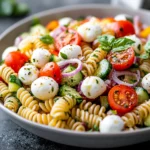
Classic Italian Pasta Salad With Italian Dressing
Description
This Classic Italian Pasta Salad with Italian Dressing is a refreshing, flavor-packed dish that’s perfect for summer gatherings, potlucks, or meal prep. Made with al dente pasta, crisp vegetables, savory meats, creamy mozzarella, and a zesty homemade Italian dressing, this salad is a go-to for any occasion.
It’s easy to customize with your favorite ingredients—swap out the meats for a vegetarian version, use whole wheat pasta for a healthier twist, or add a Mediterranean touch with feta and olives. Whether served as a side dish or a main course, this pasta salad is guaranteed to be a crowd-pleaser.
Letting the salad sit for at least 30 minutes before serving allows the flavors to meld, making it even more delicious. Make it ahead of time for a quick and tasty meal that gets better as it chills!
Ingredients
For the Pasta Salad:
- 12 ounces rotini pasta (or any short pasta of choice)
- 1 cup cherry tomatoes, halved
- 1 cup cucumber, diced
- 1/2 cup red bell pepper, diced
- 1/4 cup red onion, thinly sliced
- 1/2 cup black olives, sliced
- 1/2 cup mozzarella pearls (use dairy-free cheese for a vegan option)
- 1/4 cup fresh basil, chopped
For the Homemade Italian Dressing:
- 1/3 cup extra virgin olive oil
- 3 tablespoons red wine vinegar
- 1 teaspoon Dijon mustard
- 1 teaspoon dried oregano
- 1 teaspoon garlic powder
- 1/2 teaspoon salt
- 1/2 teaspoon black pepper
- 1/2 teaspoon crushed red pepper flakes (optional for spice)
- 1 teaspoon maple syrup or honey (balances acidity)
Instructions
Step 1: Cook the Pasta
Bring a large pot of salted water to a rolling boil. Add the rotini pasta and cook according to the package instructions until al dente. Stir occasionally to prevent sticking. Once cooked, drain the pasta and rinse under cold water to stop the cooking process. Let it cool completely before assembling the salad.
Step 2: Prepare the Vegetables
While the pasta cools, chop the cherry tomatoes, cucumber, red bell pepper, and red onion. Slice the black olives and roughly chop the fresh basil. If using mozzarella pearls, keep them whole or cut them in half for smaller bites.
Step 3: Make the Italian Dressing
In a small bowl or mason jar, whisk together the olive oil, red wine vinegar, Dijon mustard, oregano, garlic powder, salt, black pepper, and red pepper flakes. Add maple syrup or honey for a slight sweetness. Shake or whisk until the ingredients combine into a smooth, emulsified dressing.
Step 4: Assemble the Salad
In a large mixing bowl, add the cooled pasta, chopped vegetables, black olives, and mozzarella. Pour the Italian dressing over the salad and toss everything until evenly coated. Make sure every bite is infused with the tangy, herby dressing.
Step 5: Chill and Serve
For the best flavor, cover the pasta salad and refrigerate for at least 30 minutes before serving. This allows the flavors to meld together beautifully. Before serving, give it another toss, and garnish with additional fresh basil if desired.
Notes
-
Best Pasta Choices: Short pasta shapes like rotini, penne, fusilli, or farfalle work best because they hold the dressing well.
-
Cooking Tip: Cook pasta al dente to avoid sogginess. Rinse under cold water after draining to cool it quickly.
-
Dressing Tip: Toss the pasta with half the dressing while warm to help it absorb more flavor. Add the remaining dressing just before serving.
-
Make-Ahead Option: This salad can be made up to 24 hours in advance. Just stir and add a little extra dressing before serving.
-
Storage: Store in an airtight container in the fridge for up to 5 days. Stir before eating and refresh with extra dressing if needed.
-
Variations:
-
Vegetarian: Omit the meat and add chickpeas or extra veggies.
-
Gluten-Free: Use gluten-free pasta but check for texture differences.
-
Protein Boost: Add grilled chicken, shrimp, or white beans.
-
Spicy Kick: Add crushed red pepper flakes or spicy salami.
-





